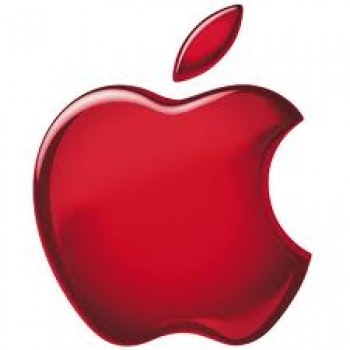We might be barely two months into 2013, but the market has already rallied by 7% since the start of the New Year. Gains in the market come in spite of anemic earnings growth. Companies are still reporting results for the final quarter of 2012, but it looks like earnings growth should clock in at less than 1% across 2012. That means companies’ share prices are soaring with little earnings growth and P/E multiples are getting bigger.
The situation must seem befuddling to Apple Inc. (NASDAQ:AAPL) investors. The company’s earnings grew 27% throughout 2012, yet its stock slide has seen its P/E shrivel all the way down to slightly north of 10 times earnings. That compares to the S&P 500’s P/E ratio that’s closer to 17.

Kohl’s, Safeway, and… Apple?
The chart below stacks up Apple Inc. (NASDAQ:AAPL)’s cheapness relative to some tech peers. On a P/E ratio basis, it now trades in the same league as Kohl’s Corporation (NYSE:KSS) and Safeway Inc. (NYSE:SWY), companies in highly competitive markets with a recent track record of little growth.

Source: S&P CapitalIQ.
Overall, the most startling perspective is Apple Inc. (NASDAQ:AAPL) trading at a P/E ratio that’s in the bottom 10% of the market. A company’s P/E ratio is in large part a reflection of what investors feel its growth opportunities are moving forward. Is Apple’s growth in the years ahead really worse than 90% of companies?
A crowded market
The most common cause for concern around Apple Inc. (NASDAQ:AAPL) isn’t that the company won’t remain a dominant player in technology. Instead, worries seem to focus on two main areas:
1). Can the company keep finding new areas of growth? Investors might be used to seeing eye-popping growth rates for smartphones, but the nature of smartphone growth is changing. Last quarter, 89% of phone sales to contract subscribers on AT&T Inc. (NYSE:T) were smartphones. Simply put, in developed markets such as America and Europe with a robust market for high-end phones, most users already have smartphones. That means future growth rates are shifting to areas such as China and India, where low-end phones will be more popular.
2). Can it keep its margins up? Apple’s margins slid from 47.4% last March down to 38.6% last quarter. Competition in areas such as tablets has been mainly on the low end, attacking pricing differences with Apple.
To be sure, concerns about Apple’s sheer size are very real. A study out yesterday from researcher NPD showed that the company now commands 20% of consumer technology sales revenues in the U.S.That’s more than double the next highest company, Samsung.
However, what many investors seem to overlook is that Apple’s sell-off isn’t just about Apple itself — it’s about uncertainty over the smartphone industry itself. Apple’s chief rival in the space has become Samsung, which shipped 216 million smartphones last year, significantly ahead of Apple’s second-place finish of 136 million smartphones shipped. Samsung has become the dominant Android company and left Apple’s growth rates in the dust last year. The company grew earnings by 74% in 2012, significantly ahead of Apple’s 27% growth rate.
Yet Samsung itself trades for just 8.5 times earnings, a significant discount to Apple’s already rock-bottom P/E ratio. If Samsung were in the S&P 500, only 18 companies would have a cheaper P/E ratio than the company. Another large smartphone play, HTC, finds itself at 8.8 times earnings.
It’s not you, Apple — it’s smartphones
The problem with smartphones should be familiar to tech investors. It’s a massive growth market with huge potential, but over time competition eats at margins and brings the leaders of the space back down to earth. We saw this in PCs, where Dell was once worth more than $100 billion, but struggled as PC margins eroded over time and is looking to go private now at $24 billion. As growth rates slow in industries, price competition ramps up and margins decline as companies must try to steal market share to find growth.
What’s fascinating is that changes in the smartphone landscape such as growth moving to emerging markets seems to have caused quite a bit of uncertainty in the future of the leaders in smartphones but not in the continuing upward trajectory of the mobile industry itself.
Investors seem to be betting that Samsung and Apple won’t be able to remain on their lofty perches atop the industry and are instead buying companies that seem set to win no matter how smartphone market share and profits shake out in the coming years. As you can see in the table below, QUALCOMM, Inc. (NASDAQ:QCOM) and Google Inc (NASDAQ:GOOG) trade for significant P/E premiums to Samsung and Apple.
| Company | P/E | Smartphone Position |
|---|---|---|
| Samsung | 8.5 | Leading Android smartphone company. |
| Apple | 10.2 | Top smartphone company as measured by profitability. Has own iOS platform. |
| Qualcomm | 17.3 | Patent licensing allows company percentage of sales on every data-capable smartphone sold. |
| 24.6 | Controls more than 80% of global search market and owns Android platform. |
Source: Yahoo! Finance for P/E multiples.
A company such as Qualcomm, which is a proxy for mobile growth since it collects a cut of almost all smartphone sales, investors are willing to pay for growth. Yet, with hardware companies such as Samsung and Apple, little to no growth is priced into their stocks. Taking this out a step further and you can see that two of the mobile companies that have seen the strongest rallies in their share price are Nokia Corporation (ADR) (NYSE:NOK) and Research In Motion Ltd (NASDAQ:BBRY) Blackberry, two companies attempting to turn around their sagging fortunes.
The bottom line is that rather than investing in the smartphone leaders of today, investors are putting their money in “safer” plays to capture industry growth or investing in more speculative plays that could pay off handsomely if today’s leaders struggle. The upside to this situation is that if perception changes that Apple’s margins and leadership position aren’t under fire, there’s a willingness to pay P/E multiples in line with the broader market.
If the storyline around Apple changes or it manages to crack some new growth markets with a low-cost iPhone or television, it’s not just earnings growth that could push the company higher but also the expansion of its insanely cheap P/E to levels closer to where the market itself sits.
The article Why Is Apple One of the Cheapest Stocks in the Market? originally appeared on Fool.com and is written by Eric Bleeker, CFA.
Eric Bleeker, CFA has no position in any stocks mentioned. The Motley Fool recommends and owns shares of Apple and Google. It also owns shares of Qualcomm.
Copyright © 1995 – 2013 The Motley Fool, LLC. All rights reserved. The Motley Fool has a disclosure policy.





